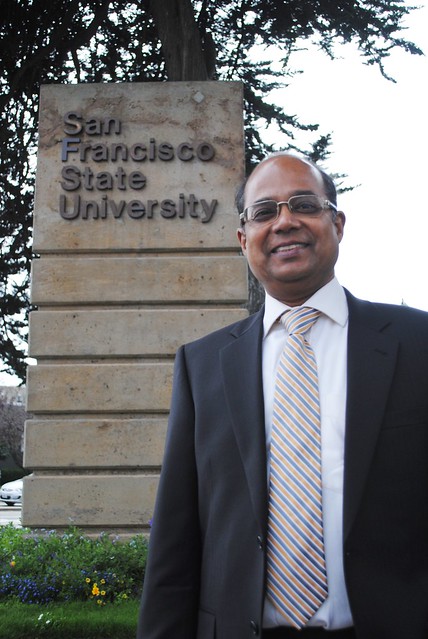
There’s more to this green revolution than just reuse, reduce and recycle. The effort to conserve the planet will have to include changing the ways in which people get where they need to go.
A new behavioral economics study out of SF State shows how “smart” urban growth can contribute to a reduction in vehicle emissions. The term smart growth is all about denser cities with jobs being placed closer to home with more public transportation.
“The results of the study are exciting because it confirms what a lot of smart growth theorists have argued since the ’70s — that people will drive less if urban centers are more ‘compact’ and destinations are more easily and affordably reached without a car,” said Emily Taylor, a master’s student at SF State who worked on the project.
By planning urban spaces with smart growth plans, each household could travel 4,400 miles less each year. With just a 10 percent increase in smart growth features in cities, the study shows each house would travel 20 percent less.
“When people have been driving an hour each way to and from work, they may realize the time cost that they are paying for living in the sprawl areas, but they may not be able to afford to live closer,” Taylor said.
Professor Sudip Chattopadhyay, chair of the economics department, whose study was published several weeks ago in “The B.E. Journal of Economic Analysis & Policy,” believes urban design solutions can create cities that are greener and more compact.
“Transportation is an issue in California that contributes to about 38 to 40 percent of energy consumption and greenhouse gas emissions,” Chattopadhyay said.
While San Francisco may have many green features with its high-density housing and ample public transit, the city and surrounding areas have plenty of room for smart development.
“If cities like Sacramento, Bakersfield and Modesto all had smart growth features that have been used in San Francisco or Los Angeles, then we would find a 55 percent reduction in terms of vehicle miles traveled,” Chattopadhyay said.
Chattopadhyay feels the findings from the study are in line with California’s current green policies, like Assembly Bill 32, which aims to reduce a certain amount of greenhouse gas emissions by 2020, and State Bill 375, a piece of anti-urban sprawl legislation.
While many countries are trying to offset their carbon debt by implementing some sort of tax, Chattopadhyay feels smart growth is a more permanent solution.
“A tax is not politically expedient and can be short lived,” Chattopadhyay said. “It doesn’t generate employment.”
Hsiao-Yun Chu, an associate professor in the department of design and industry, understands that urban design is not the leading or most popular solution of the green revolution.
“Rather than waiting around for scientists to create some new energy source or for urban planners to design the ideal city, we all have the power right now to make smarter choices in where we live, the type of car we drive, what we buy, and how we use energy and water within the home,” she said.
By proving on paper that urban design can cut down car emissions, these researchers have paved the way for the future city architects to pitch and build greener solutions.
This story has been updated to fix the misnaming of Emily Taylor. The previous version attributed her as Emily Ward. Golden Gate Xpress regrets the error.




